Situation #1
Entering the main current from an eddy or side channel
A situation that a rower must look out for, and then plan for, is when you have to enter a swift flowing current from a slower current, such as an eddy or other soft water.
When you encounter a situation similar to this, here are a few things you should take into consideration.
First, communicate with the anglers what you’re planning on doing and what you want them to do, which is to sit down, hold on, and in some case put on their PFDs.
When putting into strong currents, try to drop downstream a bit, if possible, away from the eddy zones where there are great contrasts of current speed. Keep a sharper ferry angle of 15 to 30 degrees when first entering the current so the swifter water slides under your stern. If you pull out into a powerful current from an eddy with your boat sideways, at an angle of 45 degrees or more, water will tend to heave up and possibly over the upstream side. In extreme cases this can shove your upstream side of your boat under water, flipping it. You need to be especially careful in a low sided boat, like the low-profile drift boats that are so popular these days.
I’ll tell you another rowing story. I just had purchased my Hyde low side drift boat and I was taking it out for the first time on the Lower Yuba River with my son Zack. Zack was 10 at the time. The put-in is just upstream of the Parks Bar Bridge. The put-in is a sheltered bay which is perfect for getting geared up and ready to go. The only problem is that it faces upstream and to get into the main flow of the river you have to enter the flow directly above the old bridge abutments which is a big pile of bouldered rip-rap. The river is channelized upstream of the abutments and wants to push you right into the rip-rap. The rip rap has a small to sometimes large standing wave. You have to enter the main flow and immediately ferry across the slot to get away from the rocks. If you don’t, you’re going to be into the rocks immediately. In the whole float below Parks Bar Bridge, the worst part of the whole float is in the first 40 feet. I pivoted and backrowed into the current at about a 30 degree angle and as soon as I hit the main flow the river pushed against my stern and some of the upstream side of the boat. This pushed the upstream side in down a little. This was no big deal but Zack for some reason moved to the upstream side of the boat at the same time and the boat keeled over more and shipped some water over the upstream side. I immediately pivoted the boat and got the stern pointed upstream and we were good to go. Nothing but a few shattered nerves by Zack. Zack is used to floating rivers in my large Fishcraft Raft, which is like a battleship, he can move around it and it has little to no effect on the raft. I made the mistake of not telling him to sit in the front seat, hold on and get ready. It was a good lesson for both of us. First I should have made sure Zack knew what to do and what to expect. And secondly, if a larger person would have done what Zack did we could have shipped a lot of water and in worst case flipped the boat. Lesson learned.
Situation #2 -Depth of Water When Ferrying
When rowing you need to be aware of the water depth and consider all contingencies, You need to consider things like
(a) What is the best route downstream?
(b) What is the best position for the boat to be in for the anglers best success?
(c) What is the water depth?
When ferrying across the river the depth of the river can create problems with your downstream oar. Your downstream oar blade can be facing directly downstream. If the water is shallow it is possible to stick an oar in the streambed. You need to take shallow oar strokes with the downstream oar as you ferry across shallower water because when ferrying you are somewhat sideways to the current. The downstream oar could potentially jamb a blade in the streambed. If the oar jambs you could
(a) Break an oar blade
(b) Bust the oar out of the oar locks
(c) Bust the oar out of the oar locks and lose the oar
(d) Jamb the oar in the oar lock and flip the boat, because the jambed our can lift the downstream side of the boat upward.and shipping water on the upstream side.
It is not uncommon to lose an oar this way. Some people install oar straps to prevent losing an oar.
Situation #3 – Wrapping a Boulder
When a boat slams into a large river washed boulder mid stream, a predicable sequence of events can follow. The greater the speed and force of the water, the more likely the boat is to flip in the case of a drift boat or wrap in the case of a raft. The impact can be more jarring than you’d expect. Gear and people can fly overboard. Water instantly begins heaving up and possibly over the upstream side. This tends to shove the upstream side under water and in the case of a drift boat, flips it and sinks it, or in a raft pins in to the rock. In most cases like this the bottom of the hull or raft will be pinned to the rock. If you’re in a drift boat and lucky, the boat will spin off the rock half full with water. As you may understand you don’t want to be in this position.
How to avoid flipping on a rock. Once you find yourself approaching or engaged with a large mid stream boulder, the rower should continue rowing as hard as possible to attempt spinning the boat off the rock. If the passengers lean away from the rock in fear or attempting to brace themselves for the collision it only increases the likelihood of flipping the boat. The passengers should be consciously acting as human ballast in an effort to keep the boat from flipping. Whatever side is going down the passengers should move to the opposite side. This movement can keep a boat from flipping although it doesn’t guarantee it. The boat may already be filling up with water and going down. If PFD’s are not on they should be put on ASAP.
By the way, good luck out there!
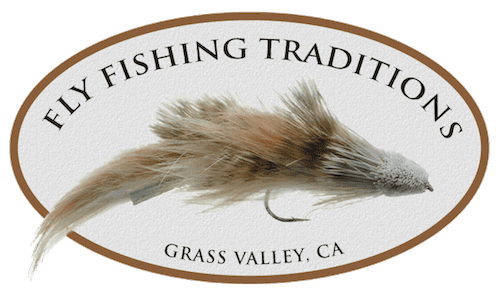
 Lets put some of our techniques into use and talk about the first maneuver you’ll have to learn which is how to put in and shove off into the current.
Lets put some of our techniques into use and talk about the first maneuver you’ll have to learn which is how to put in and shove off into the current.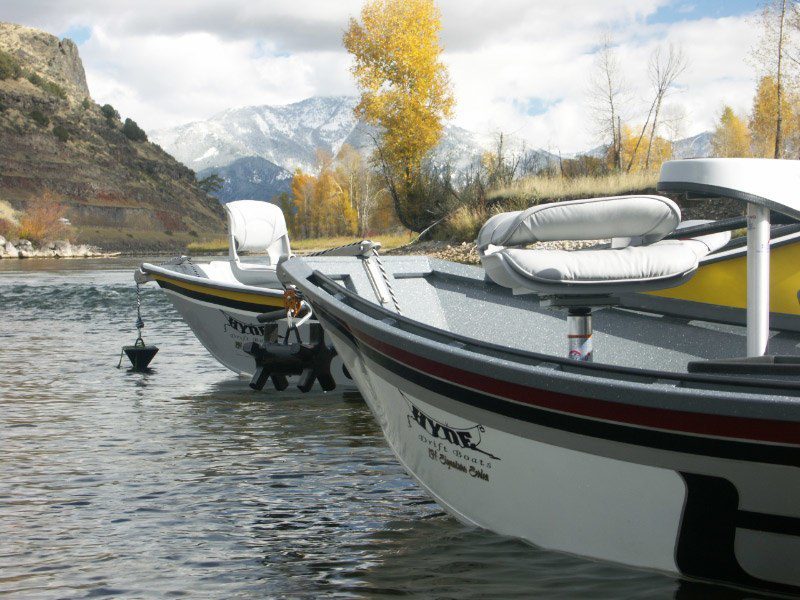
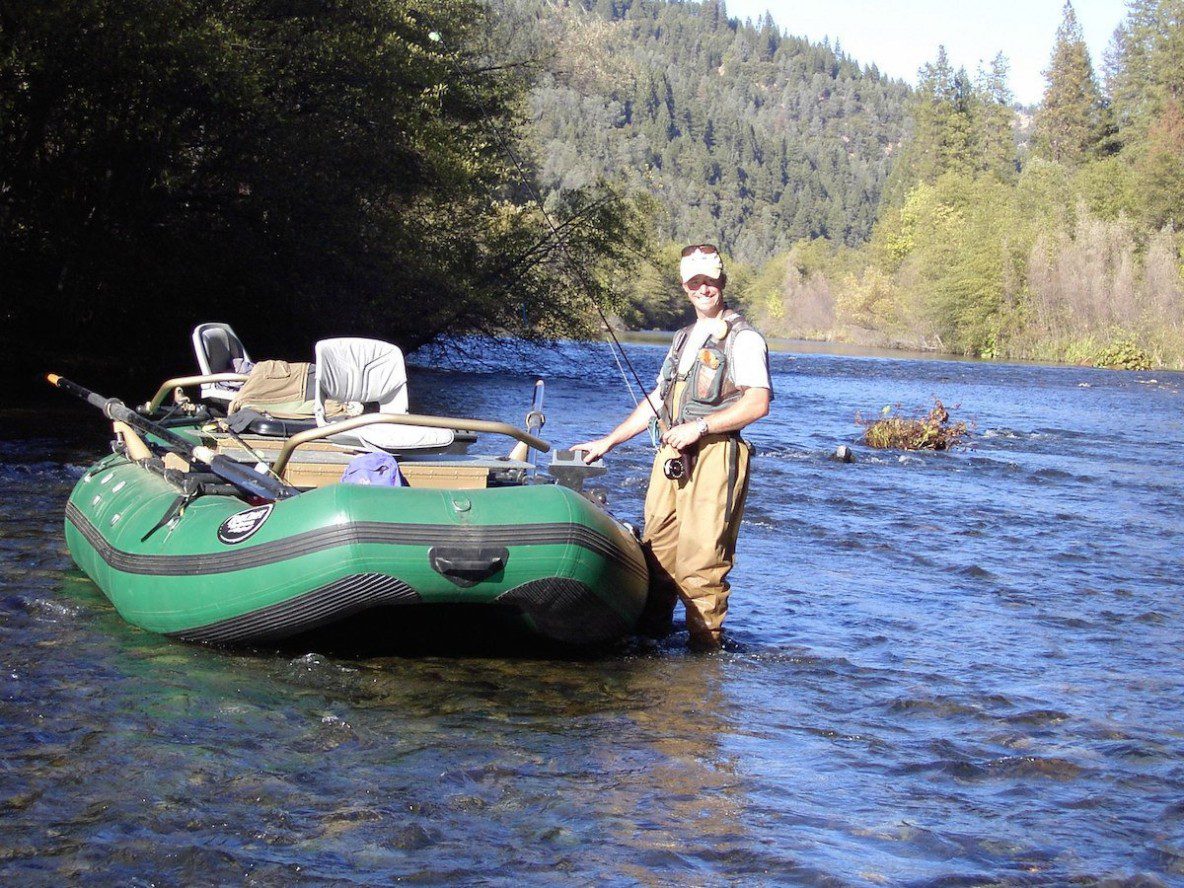
 There should be life vests ready and available for all people in the boat.
There should be life vests ready and available for all people in the boat. You should have a throw bag which are available at NRS which can be used if you ever have someone overboard and then can throw a line to haul them to safety.
You should have a throw bag which are available at NRS which can be used if you ever have someone overboard and then can throw a line to haul them to safety. As with any outdoor activity having a well stocked first aid kit is a very good idea.
As with any outdoor activity having a well stocked first aid kit is a very good idea. I try to always have sunscreen available for myself for whoever else might need it.
I try to always have sunscreen available for myself for whoever else might need it. A good pair of rowers gloves comes in handy if you’re not on the river
A good pair of rowers gloves comes in handy if you’re not on the river Everyone in the boat should have sunglasses. This is a safety issue as much as a tool to help spot fish. A hook in the eye is no one’s idea of a fun day.
Everyone in the boat should have sunglasses. This is a safety issue as much as a tool to help spot fish. A hook in the eye is no one’s idea of a fun day. Carlisle Oars sells a breakdown oar that can be strapped under a rowers seat in a drift boat or along the tube on a full sized raft or cat.
Carlisle Oars sells a breakdown oar that can be strapped under a rowers seat in a drift boat or along the tube on a full sized raft or cat.
 Rainbow Trout prefer temperatures in the range of 55 to 60 degrees F. Although they will tolerate temperatures as high as 65 degrees F.
Rainbow Trout prefer temperatures in the range of 55 to 60 degrees F. Although they will tolerate temperatures as high as 65 degrees F. Brown Trout can be found in water with much warmer temperatures in the range of 60 to 70 degrees F.
Brown Trout can be found in water with much warmer temperatures in the range of 60 to 70 degrees F. Brook Trout prefer cooler temperatures in the range of 52 to 56 degrees F.
Brook Trout prefer cooler temperatures in the range of 52 to 56 degrees F. Cutthroat Trout prefer temperatures in the range of 55 to 65 degrees F.
Cutthroat Trout prefer temperatures in the range of 55 to 65 degrees F. Yarn indicators are best when the indicator is set at 12’ or less. A yarn indicator is set in a fixed position, so the 12 foot depth is based upon how far you can reach to land the fish in your landing net standing in a boat, probably not more than 12 feet. If fishing from a pontoon boat or a float tube you must set your yarn indicator shorter. They are good for crystal clear water. In crystal clear water use a white indicator.
Yarn indicators are best when the indicator is set at 12’ or less. A yarn indicator is set in a fixed position, so the 12 foot depth is based upon how far you can reach to land the fish in your landing net standing in a boat, probably not more than 12 feet. If fishing from a pontoon boat or a float tube you must set your yarn indicator shorter. They are good for crystal clear water. In crystal clear water use a white indicator. If you’re a stream fisherman you’re probably well aware of using Dry Dropper techniques. This can also pay off when fishing stillwaters. You can imitate two stages of an insect. Using a dry fly as an indicator is excellent when trout are in the top third of the water column. In the wind the larger the waves the larger the fly. You’ll want to keep the fly spacing in stillwaters 3’ to 5’ apart depending where the fish are feeding.
If you’re a stream fisherman you’re probably well aware of using Dry Dropper techniques. This can also pay off when fishing stillwaters. You can imitate two stages of an insect. Using a dry fly as an indicator is excellent when trout are in the top third of the water column. In the wind the larger the waves the larger the fly. You’ll want to keep the fly spacing in stillwaters 3’ to 5’ apart depending where the fish are feeding. Probably the most versatile and popular indicators for stillwaters are “Slip” or “Quick Release” indicators. They allows the stillwater angler to probe deep water up to 20 and even 25 feet deep. The indicators are available in many sizes and shapes. They use a peg that releases when you have a fish on and when the indicator reaches your rod tip the peg pops loose and the indicator and peg slides towards the fish. You’ll want to use a swivel or tippet ring to make sure you don’t lose the peg if the fly breaks off. A swivel will hold everything safely in place.
Probably the most versatile and popular indicators for stillwaters are “Slip” or “Quick Release” indicators. They allows the stillwater angler to probe deep water up to 20 and even 25 feet deep. The indicators are available in many sizes and shapes. They use a peg that releases when you have a fish on and when the indicator reaches your rod tip the peg pops loose and the indicator and peg slides towards the fish. You’ll want to use a swivel or tippet ring to make sure you don’t lose the peg if the fly breaks off. A swivel will hold everything safely in place.
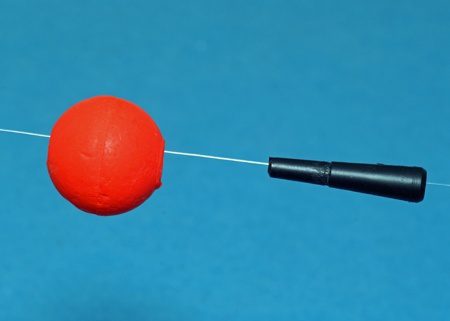
 Try using balanced flies. Tie up some balanced flies, like a “Balanced Leech”. This style of tying incorporates a tungsten bead mounted on a common straight pin that extends from the hook shank in front of the eye. The tungsten beads work best as their dense mass maintains an overall compact fly.
Try using balanced flies. Tie up some balanced flies, like a “Balanced Leech”. This style of tying incorporates a tungsten bead mounted on a common straight pin that extends from the hook shank in front of the eye. The tungsten beads work best as their dense mass maintains an overall compact fly.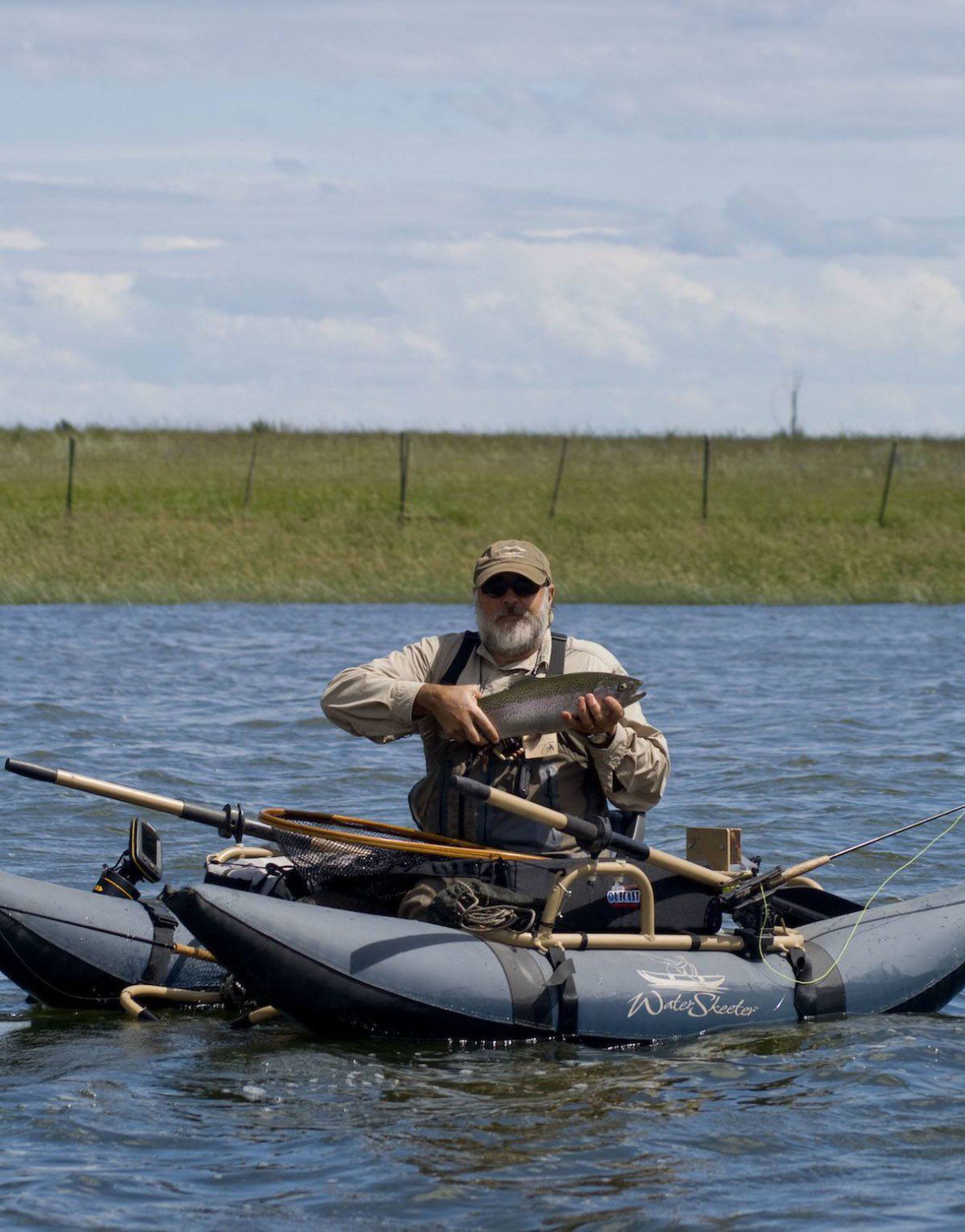
 I had the unfortunate experience of fishing an Idaho Lake a few weeks ago when the wind started blowing and gusting like crazy. I was fishing in my pontoon boat and I was soon swinging and swaying with the wind. Trying to cast and present my flies where I wanted to was downright impossible. I essentially gave up. There were some other people fishing out of double anchored boats and they were fishing comfortably and having no problem at all. They were catching fish and I was trying to just stay in one place. Luckily the wind died down and I was able to continue fishing. I’ve learned my lesson.
I had the unfortunate experience of fishing an Idaho Lake a few weeks ago when the wind started blowing and gusting like crazy. I was fishing in my pontoon boat and I was soon swinging and swaying with the wind. Trying to cast and present my flies where I wanted to was downright impossible. I essentially gave up. There were some other people fishing out of double anchored boats and they were fishing comfortably and having no problem at all. They were catching fish and I was trying to just stay in one place. Luckily the wind died down and I was able to continue fishing. I’ve learned my lesson.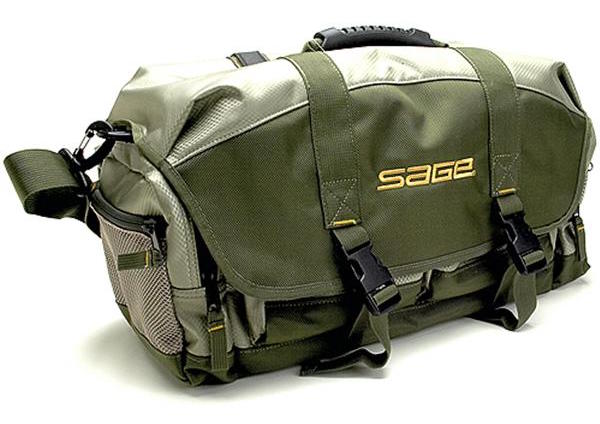
 The Sage DXL Bag
The Sage DXL Bag The Outcast XL Splashproof Pocket Bag
The Outcast XL Splashproof Pocket Bag It is recommended to carry a minimum of two fly rods, so you will need at least two good quality reels that will be rigged and ready to go.
It is recommended to carry a minimum of two fly rods, so you will need at least two good quality reels that will be rigged and ready to go. Never leave home without a good selection of leaders and tippet. Leaders and tippet are the critical connection between the fly and the angler and are sometimes overlooked. Depending upon leader set up preference, carry butt material for long leader setups or braided loops.
Never leave home without a good selection of leaders and tippet. Leaders and tippet are the critical connection between the fly and the angler and are sometimes overlooked. Depending upon leader set up preference, carry butt material for long leader setups or braided loops. There are many accessories that a well stocked kit bag should have inside.
There are many accessories that a well stocked kit bag should have inside. After years of experimenting I prefer smaller fly boxes that store easily in the kit bag. Use a label maker to identify the contents so time isn’t wasted looking for a favorite pattern. Clear compartmentalized boxes are ideal for dry flies as they tend not to squash hackle.
After years of experimenting I prefer smaller fly boxes that store easily in the kit bag. Use a label maker to identify the contents so time isn’t wasted looking for a favorite pattern. Clear compartmentalized boxes are ideal for dry flies as they tend not to squash hackle. Safety and comfort items typically have nothing directly to do with fishing but everything with an enjoyable day on the water.
Safety and comfort items typically have nothing directly to do with fishing but everything with an enjoyable day on the water.